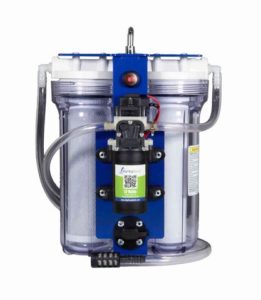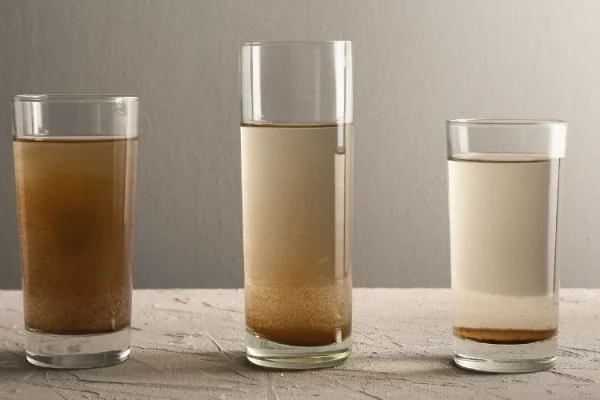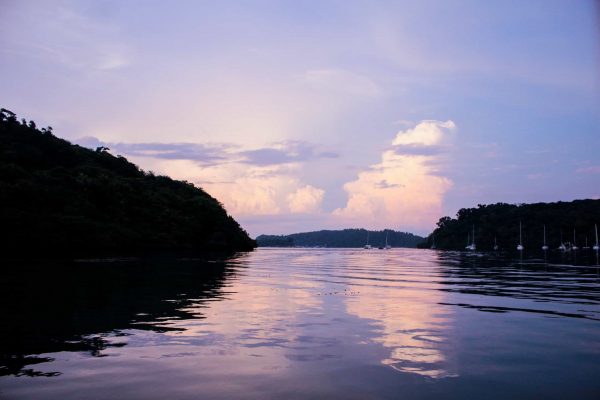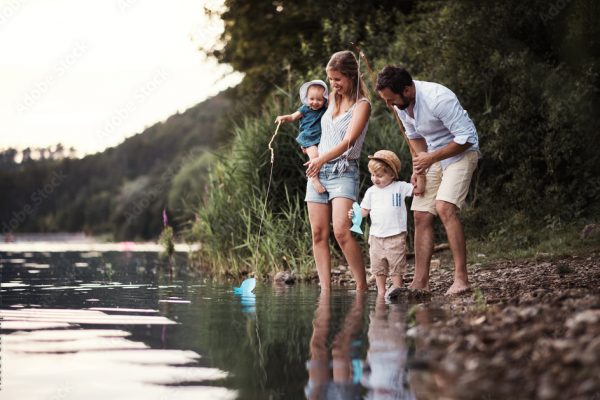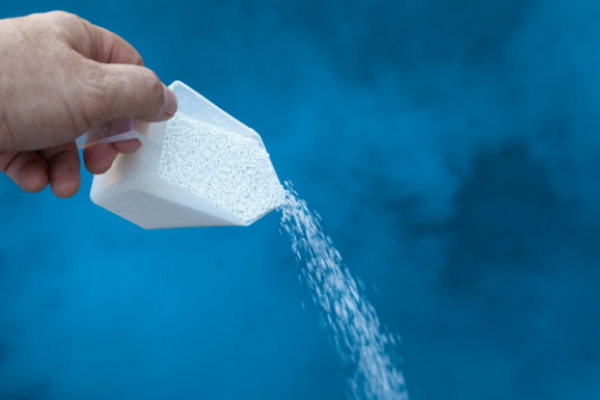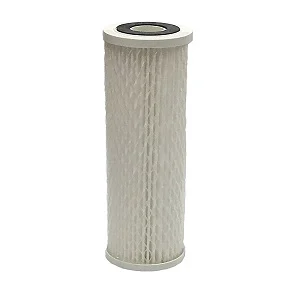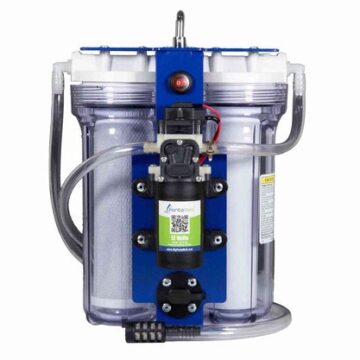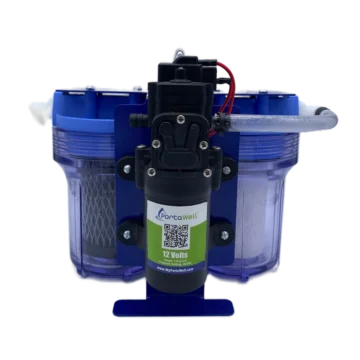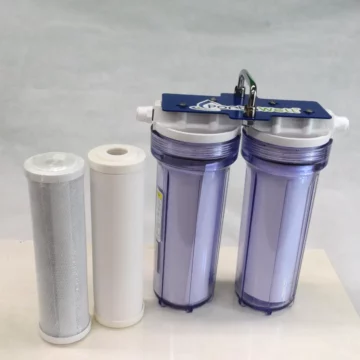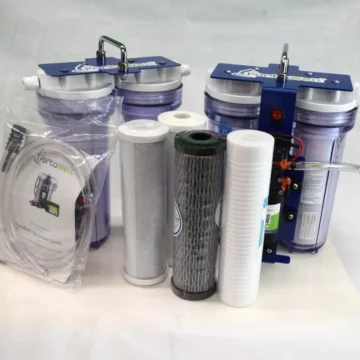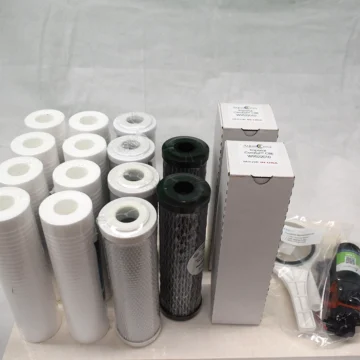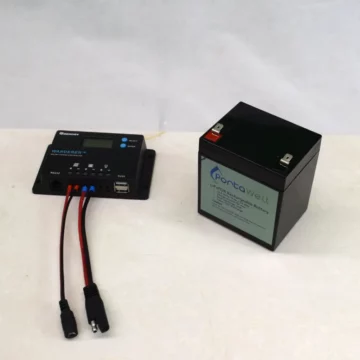Sustainable Water Solution for Emergency Preparedness

sus·tain·a·bil·i·ty – Noun – the ability to maintain or support a process over time.
Sustainability, as it applies to emergency preparedness, is particularly important if the scenario is of long duration, where basic utilities such as power and clean tap water are not available for the foreseeable future. Sustainability means the ability to have a renewable supply of necessities for as long as an emergency situation lasts.
This is the reason we stockpile several, if not many, months of emergency supplies like food, medical supplies, basic tools, etc. Once these items are expended, they are not easily replenished. The best we can hope for is that our supplies outlast the emergency or at least last long enough for conditions to improve.
There are some things we cannot stockpile easily for a long-term emergency like gasoline for a generator. Gasoline does not store well long term, plus it is dangerous to store more than a few gallons unless it is in an underground tank.
Water storage is difficult to stockpile for the long term.
Clean, drinkable water is a basic item that we cannot survive without for more than a few of days. Even after one day, our body functions start to deteriorate especially in hot weather. The human body needs a regular, ongoing supply of drinking water to survive.
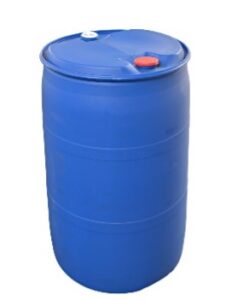 Long Term Water Storage is difficult to achieve mainly because it is heavy (8.34 lbs. per gallon) and it occupies considerable storage space—unlike food it can’t be dehydrated. One traditional method of maintaining a long-term water storage supply is to use water storage tanks. A 50-gallon water tank weighs approximately 425 pounds and would last a family of 4 people less than 2 weeks at the minimum FEMA usage of 1 gallon per person per day[1].
Long Term Water Storage is difficult to achieve mainly because it is heavy (8.34 lbs. per gallon) and it occupies considerable storage space—unlike food it can’t be dehydrated. One traditional method of maintaining a long-term water storage supply is to use water storage tanks. A 50-gallon water tank weighs approximately 425 pounds and would last a family of 4 people less than 2 weeks at the minimum FEMA usage of 1 gallon per person per day[1].
If the emergency threatens long term disruption of power and water, your water storage supply would be depleted even faster because of demand from extended family, or neighbors. You, and those that depend on you, would be forced to turn to any available untreated water source just to survive.
Given that an emergency supply of water storage is not a sustainable solution for the long term, consideration must be given to a means of treating a surface water source to make it suitable for drinking. Water sustainability should meet these important criteria:
- Effective – An emergency water treatment process or device should have the capability to reduce or remove harmful contaminants from the surface water source sufficient to make it safe for human consumption.
- Portable – An emergency water treatment process or device should be lightweight, easy to store, easy to disinfect and easy to transport. This is especially important if you need to move the system between various locations to access available water.
- Flexible – An emergency treatment process or device should be able to accommodate different source water conditions and potential contaminants. Treating captured rainwater for possible contaminants vs. treating water taken from a river or lake may require significantly different approaches.
- Capacity – An emergency treatment process or device should be able to provide adequate quantities of potable water in as short a time as possible with the least amount of effort.
- Renewable – An emergency treatment process or device should require the least number of non-renewable consumables. If the emergency is of long duration, it is unlikely that you will be able to replenish any supplies your treatment process requires.
PortaWell® provides a sustainable source of potable water.
Used in conjunction with your short-term water storage supply, the PortaWell® was developed to provide a sustainable supply of potable water for an extended period. PortaWell®, with a few additional supplies[2], provides a dependable supply of life-sustaining potable water by incorporating the following distinctive characteristics:
- Ease of Use – The PortaWell® is extremely simple for the user. Its operation is completely intuitive – raw water goes in one side, visually passes through two filter stages and potable water comes out the other side.
- Effective – PortaWell® can be configured with filters that will remove 100% of cysts including giardia and cryptosporidium, 99.99 % of pathogenic bacteria (cholera, typhoid, coliform), chlorine, metals and volatile organic chemicals from untreated water. PortaWell® is a true dual stage filtration system which can be increased to 4 stages with optional PortaWell® Expansion kit. These multiple stages allow filters to perform their designed function rather than relying on a single filter to perform multiple functions like remove large particulate, chemical contaminants and microscopic contaminants.
- Portable – The PortaWell® is both compact and portable, fitting inside a standard 5-gallon bucket. The bucket provides a convenient container for storage and transport and is also carrying. PortaWell® is of durable construction, easy set up and easy to use. PortaWell® weighs less than 15 lbs. including the filters and bucket.
- Flexible – Because the PortaWell® uses standard sized filter housings, commercially available filters can be tailored to specific surface water conditions. Multiple filter options include sediment prefilters, cleanable submicron ceramic filters for microbe reduction, activated carbon filters for chemical contaminant reduction, and dual function ceramic filters with internal core for reduction of both microbes and chemical contaminants (including heavy metals and radionuclides).
- Capacity – PortaWell® filters up to 40 to 60 gallons per hour of water. Comparable gravity fed or hand pumped systems typically produce 5 to 10 gallons per hour under optimum conditions. This means the PortaWell® can process enough water in one hour to supply a family’s water for up to a week. Less effort and time spent on providing life sustaining water means more time and effort available for other important survival tasks.
- Renewable – PortaWell® requires very little power to run—less than 35 watts. A small 12-volt Lithium battery (5-amp hour capacity) will run PortaWell® for 1 hour before needing recharging. A lithium battery can go through this charge & discharge cycle, if properly maintained, thousands of times before needing replacement. A 50-watt solar panel with a 10-amp solar charge controller can recharge this battery in 2 to 3 hours of full sun.
PortaWell® provides a dependable treatment process to supply life sustaining water as long as you have a suitable supply of surface water and sunshine. If you aren’t a PortaWell® owner, make your purchase today! If you are a PortaWell® owner, take stock of your water filters and then pass along this information to anyone who is looking for a renewable supply of water.
[1] FEMA recommends storage of 1 gallon per person per day of drinking water for emergencies. This amount of water is sufficient only for drinking and basic hygiene (i.e., brushing teeth). This amount is significantly less than is currently used by the typical modern person which is ~50 gallons per person per day. To reduce your water consumption by 90% for the foreseeable future because of a long-term emergency would require a drastic change. Some of this supply could be made up with non-potable water sources but care must be taken to disinfect and sanitize water supplies as much as possible to avoid sickness from organisms and chemicals in the water even for washing of clothes, bathing or cleaning of surfaces and cooking utensils.
[2] i.e. spare filters, solar panel with charge control, 12 volt battery.
Categories
Facebook
Twitter
Email
Print
Recent Posts
Emergency Water Treatment Tutorial (Part 1) – Particulate
There are various contaminant types that can make surface water unsafe to drink and learning how best to reduce/remove these contaminants is critical to emergency ...
Read More
Water Sustainability: Powering Your PortaWell® System
Sustainability is a key element especially when it comes to water and PortaWell can help provide sustainable water in an emergency. Clean water is required ...
Read More
Selection of Surface Source Water
One PortaWell® customer asked the question: I live near the Jordan River in Salt Lake City, Utah. Could I use it as a water source ...
Read More
Chlorine Water Treatment for Drinking Water
Water treatment can be a challenge in an emergency and here is the why and how chlorine will be effective in the process of creating ...
Read More
Filtering Pool Water
Filtering Pool Water – PortaWell® Many people have inquired if they can filter pool water with a PortaWell® system to make it safe for drinking ...
Read More
PortaWell® Newsletters
PortaWell® Newsletters Download and read our past newsletters with tips and tricks for using your PortaWell®: Water Filter Placement and Selection – Newsletter Volume 1 ...
Read More
PortaWell® Products
-
Argonide NanoCeram® Filter (10-inch, 0.2 micron)
$52.99Original price was: $52.99.$43.95Current price is: $43.95. -
PortaWell® Starter Pak
$379.00Original price was: $379.00.$339.00Current price is: $339.00. -
PortaWell® Mini Expedition
$279.99Original price was: $279.99.$249.00Current price is: $249.00. -
PortaWell® Expansion Kit
$165.00Original price was: $165.00.$149.00Current price is: $149.00. -
PortaWell® Plus Kit
$539.00Original price was: $539.00.$479.00Current price is: $479.00. -
PortaWell® Survivor Kit
$325.00Original price was: $325.00.$289.00Current price is: $289.00. -
PortaWell® Solar Accessory Kit
$71.95Original price was: $71.95.$49.95Current price is: $49.95. -
PortaHeat®
$349.00Original price was: $349.00.$299.00Current price is: $299.00.

